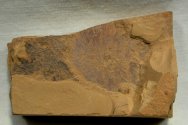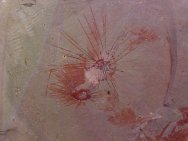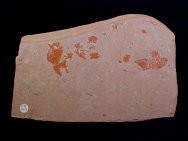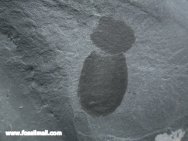|
Fossil
Poriferans
|
Of
related interest: |
| When people think of fossils, they normally think first of dinosaurs, of trilobites, of ammonites - but usually not sponges, yet they should. The humble sponge during modern times is represented by some 9000 species spread across the globe and occupying essentially all aquatic environments. Despite their ubiquitous dispersion, they are of truly ancient origin. Indeed, sponges may well be the "Lucy" of all of the Kingdom Animalia, since they were likely to have been the first animals on Earth with cooperative cells. More accurately, based on phylogenetic data from sponges and other creatures of ancient origin, we can conjecture that sponges occupy the oldest and lowest branch on the animal family tree. Because the higher branches have introduced additional innovations that account for animals' rich diversity, the common ancestor of all animals likely resembled modern sponges much more closely than any other living animals. Sponges' ability to grow different cell types performing different and cooperative functions was an innovation that underlies virtually all subsequent advances in the animal kingdom. While their cell signally pathways are simplistic compared to most modern animals, it obviously was robust enough for them to survive the numerous mass extinctions on earth since the origin of sponges in Precambrian time. Sponges are well represented in the fossil record since the Cambrian, and Phanerozoic sponges paramount in reef development. While Cambrian sponge fossils are often rare, the early Poriferans are found in several famous sites in North America, notably the Burgess Shale of Canada, and the Cambrian strata of Utah. Many Poriferans sponges are also described among the Chengjiang fauna of China. The Profera are believed to have undergone several radiations in the Paleozoic and Mesozoic Eras, probably attaining greatest diversity during the Cretaceous. | ||||||||||||||||||||||
|
Fossil
Museum Navigation:
Home Geological Time Paleobiology Geological History Tree of Life Fossil Sites Fossils Evolution Fossil Record Museum Fossils |





